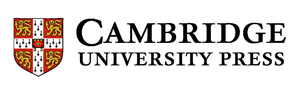Symposium S11
26 – 27 June 2017
A multi-messenger look at the origin of gamma-ray bursts
Aims and scope
 The origin of gamma-ray bursts (GRBs) – some of the most energetic events ever detected – is still a mystery today, 50 years after their discovery. However, in the era of multi-messenger astronomy, we can take a fresh look at their underlying physics. With gamma-ray and X-ray observations from active space missions such as Fermi, Swift, MAXI, INTEGRAL, Konus, AGILE, NuSTAR, CALET, Lomonosov and AstroSAT; with afterglow observations in radio (e.g. MeerKAT), optical and X-ray; and with future facilities like CTA, Athena and SVOM, it is now more important than ever to connect our theoretical understanding of GRB physics to these multi-wavelength observations.
The origin of gamma-ray bursts (GRBs) – some of the most energetic events ever detected – is still a mystery today, 50 years after their discovery. However, in the era of multi-messenger astronomy, we can take a fresh look at their underlying physics. With gamma-ray and X-ray observations from active space missions such as Fermi, Swift, MAXI, INTEGRAL, Konus, AGILE, NuSTAR, CALET, Lomonosov and AstroSAT; with afterglow observations in radio (e.g. MeerKAT), optical and X-ray; and with future facilities like CTA, Athena and SVOM, it is now more important than ever to connect our theoretical understanding of GRB physics to these multi-wavelength observations.
Indeed, there are several open questions regarding the origin of GRBs: What are the prospective progenitor systems? What powers the central engines? How does the circumstellar environment influence the afterglows? What are the connections between various supernova classes and GRBs? How strong is their dependence on the host galaxies' metallicities? And if it is still difficult to reach a conclusion on these questions, what are the directions we shall proceed in the future?
Furthermore, after the discovery of astrophysical neutrinos by IceCube and that of gravitational wave signals by LIGO, the role that GRBs may play in these new fields of astrophysics needs to be investigated. Should we expect gravitational wave signals to be accompanied by an electromagnetic emission of any wavelength? Should we expect GRBs, either short- or long-duration ones, to contribute to the astrophysical neutrino background?
This Symposium, which not only celebrates the 50th anniversary of discovering GRBs but the 20th anniversary of discovering afterglows, aims to bring together scientists working either on these multi-messenger/wavelength observations or on theoretical modeling. A special emphasis is put on dialogue and mutual comprehension. The different fields of astrophysics tend to have not only different techniques and working methods, but sometimes even heterogeneous terminology. Therefore, we encourage our speakers to make their message clear by using terms and expressions carefully chosen to an audience of general astronomers. This approach will not only ensure the success of the meeting by forging new collaborations between far-away fields, but will also promote equity and fair-play between junior and senior, as well as native and non-native English speakers.
Additionally, we aim for gender balance in this meeting, making sure that no gender group takes up more than approx. half of our invited speakers and chairs.
Contributions not selected for an oral presentation will have a chance to be presented as posters. A proceedings volume of the workshop will be issued.
Programme
- Electromagnetic counterparts of gravitational wave events
- – GRBs as gravitational-wave sources
- – counterpart identification and classification in the era of poorly localized transients
- Models and observations of GRB progenitors
- – nature of the central engine and the prompt emission
- – the progenitors of GRBs
- – GRB host galaxies, the role of the environment
- – GRB-supernova connection
- – GRB-cosmology
- Multi-wavelength and multi-messenger observations and follow-up
- – gamma-ray prompt emission
- – afterglow research
- – GRBs as neutrino sources
- – X-ray and Gamma-ray Polarimetry of GRBs
- – the connection between fast radio bursts (FRB) and GRBs
- Current and future experiments
- – Son of X-shooter (SOXS) spectrograph for the NTT
- – Robotic telescopes and automated, rapid response (Pan-STARRS, PESSTO, etc.)
- – the Cherenkov Telescope Array (CTA) and its scientific prospects to GRBs
- – LSST and aLIGO/AdVirgo in the context of GRBs
- 50 years of GRB research: a history
Invited speakers
- Péter Mészáros (Penn State Univ., USA)
- Rosalba Perna (Stony Brook Univ., USA)
- Enrico Costa (INAF/IAPS & ASI, Rome, Italy)
- Lidia Oskinova (Univ. of Potsdam, Germany)
- Péter Veres (Univ. of Alabama, USA)
- Michael Prouza (Inst. of Physics, AV, Czech Rep.)
- Lise Christensen (Univ. of Coppenhagen, Denmark)
- Rafail Aptekar (Ioffe Inst., Saint Petersburg, Russia)
Scientific organisers
Dorottya Szécsi (AsÚ AV ČR, Ondřejov, Czech Rep. – co-chair), Chris Copperwheat (Liverpool JMU, UK – co-chair), Susanna Vergani (CNRS, Paris Observatory, France), Attila Mészáros (Charles Univ., Prague, Czech Rep.), Marica Branchesi (INFN, Firenze, Italy), Zsolt Bagoly (Eötvös Univ., Budapest, Hungary), Christina Thöne (IAA, Granada, Spain), Jakub Řípa (LeCosPA, Taipei, Taiwan), Samantha Oates (Warwick, UK), Alexei Pozanenko (IKI, Moscow, Russia), Patricia Schady (MPE, Germany)
Contact
Dorottya Szécsi (szecsi @ asu.cas.cz), Chris Copperwheat (c.m.copperwheat @ ljmu.ac.uk)
Updated on Mon Jun 12 09:27:44 CEST 2017
|

 A power cut will shut down all EAS services on Tuesday, 10 January 2017 starting at 7:30 CET.
A power cut will shut down all EAS services on Tuesday, 10 January 2017 starting at 7:30 CET.




















